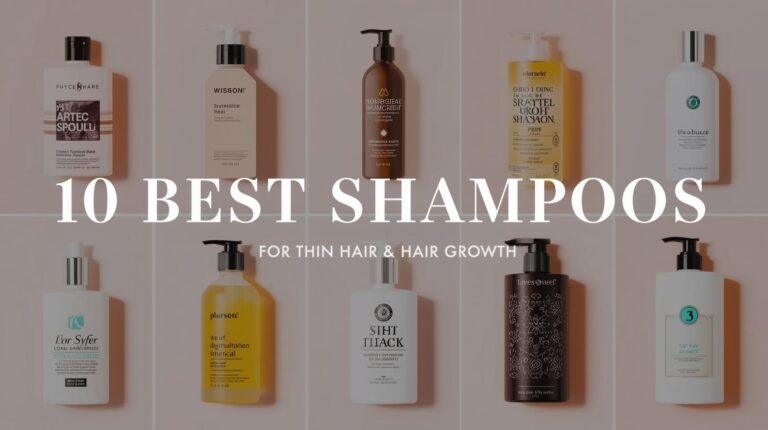10 Hair Care Routines for Thinning Hair
Thinning hair can be stressful, especially when you start noticing more strands on your brush or in the shower. But the good news is — you can take control. With the right hair care routine, you can strengthen your strands, reduce breakage, and promote healthier, fuller-looking hair.
Whether your hair is thinning due to genetics, stress, or styling habits, these 10 hair care routines for thinning hair will help you restore confidence and vitality to your locks.
1. Choose the Right Shampoo and Conditioner
Start with a volumizing or thickening shampoo that cleanses gently while adding body to your strands. Avoid heavy, oil-rich formulas that can weigh hair down. Follow up with a lightweight conditioner — apply it only from the mid-lengths to the ends to avoid flat roots. Look for ingredients like biotin, keratin, and caffeine that promote scalp stimulation and strength.
2. Massage Your Scalp Daily
A daily scalp massage boosts blood circulation, which helps deliver nutrients to your hair follicles. It’s one of the simplest yet most effective routines to encourage growth. Use your fingertips or a soft silicone brush and massage in circular motions for 3–5 minutes. For extra benefits, apply a few drops of rosemary or peppermint oil — both are known to support scalp health.
3. Avoid Overwashing Your Hair
Washing too often can strip away your scalp’s natural oils, leaving hair brittle and weak. Aim to wash your hair two to three times a week. On non-wash days, use a dry shampoo to absorb excess oil while maintaining volume. This helps protect your hair’s natural balance and moisture.
4. Use a Heat Protectant Before Styling
Thin or thinning hair is more vulnerable to heat damage. Always use a heat protectant spray or serum before blow-drying, straightening, or curling. This creates a barrier that minimizes damage while keeping your strands soft and smooth. Try to use the lowest heat setting possible for your hair type.
5. Be Gentle When Brushing
Rough brushing can cause unnecessary breakage and hair loss. Use a wide-tooth comb or a soft bristle brush, and always start detangling from the ends, working upward. Brushing wet hair should be avoided — it’s at its weakest when damp. Instead, gently towel-dry and detangle with care.
6. Nourish with Hair Oils and Serums
Hair oils are essential for moisturizing the scalp and improving shine, but choose lightweight ones that won’t weigh your hair down. Argan oil, jojoba oil, and rosemary oil are excellent options for thin or thinning hair. Massage them into your scalp once or twice a week to strengthen roots and add hydration.
7. Incorporate a Balanced Diet
Your hair’s health starts from within. Include foods rich in protein, biotin, iron, zinc, and omega-3 fatty acids in your diet. Eggs, nuts, salmon, spinach, and avocados are great options. Staying hydrated is equally important — dehydration can make your hair look dull and weak.
8. Limit Chemical Treatments
Bleaching, perming, and frequent coloring can weaken thin hair and cause breakage. If you love experimenting with color, opt for ammonia-free dyes or gloss treatments instead. Always follow up chemical services with deep conditioning masks to maintain strength and elasticity.
9. Use a Weekly Hair Mask
A nourishing hair mask once a week helps restore moisture and elasticity. Look for masks with ingredients like keratin, collagen, castor oil, or aloe vera. Apply from roots to ends, leave it on for 10–15 minutes, then rinse thoroughly. Regular use will make your hair feel thicker and healthier over time.
10. Sleep Smart
Your nighttime habits matter too! Replace cotton pillowcases with silk or satin ones to reduce friction and prevent breakage. If you have long hair, loosely braid it before bed or tie it in a soft scrunchie to minimize tangles. Avoid sleeping with wet hair, as it can weaken strands and cause thinning.
Final Thoughts
Consistency is the key to managing thinning hair. Adopting these 10 hair care routines will help you strengthen your strands, nourish your scalp, and maintain long-term volume. Combine these habits with patience and a gentle touch — healthy hair growth takes time but is absolutely achievable.
Remember: your hair doesn’t need perfection; it needs consistent, mindful care. With the right routine, you can bring life, strength, and confidence back to every strand.






